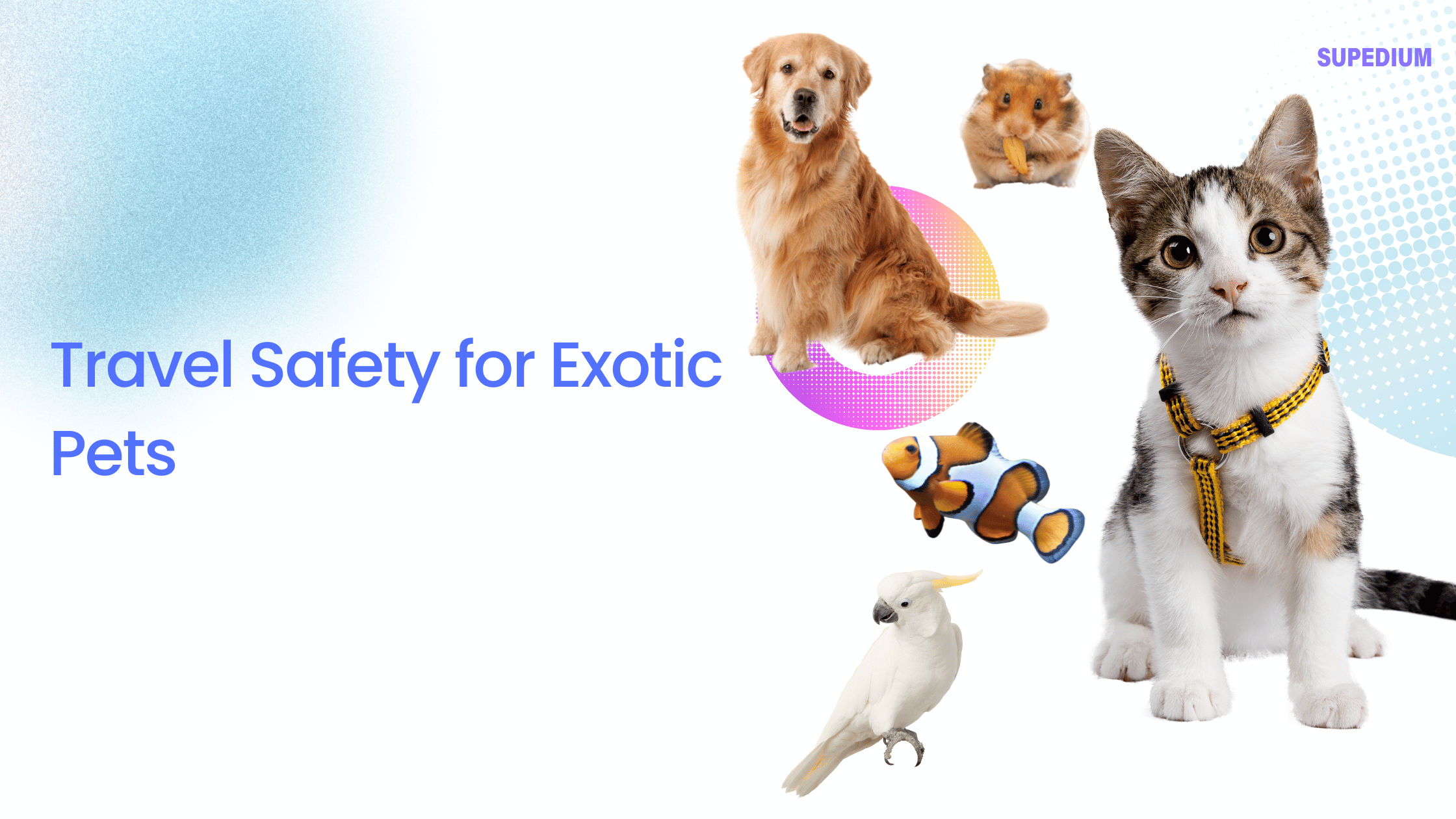Table of Contents
![]()
Traveling with exotic pets can be a rewarding experience, but it also comes with unique challenges and responsibilities. Ensuring their safety and well-being during travel requires thorough preparation, understanding travel regulations, and implementing effective care strategies. This article explores essential aspects of traveling safely with exotic pets, from planning to arrival at your destination.
Preparing for Travel
Researching Travel Regulations
Before embarking on your journey, it’s crucial to familiarize yourself with the regulations surrounding the travel of exotic pets. Different airlines and transportation companies have varying policies regarding pet travel, particularly for exotic animals. Research any local and international laws that may affect your travel plans. This may include specific permits or documentation required for certain species, ensuring compliance with all legal requirements.
Health and Safety Preparations
A veterinary check-up is essential before traveling with your exotic pet. Schedule a visit to ensure your pet is healthy and obtain necessary vaccinations and health certificates. Some destinations may require proof of specific vaccinations or health evaluations. Additionally, make sure your pet is properly identified, either through microchipping or by using a collar with an ID tag.
Packing Essentials
Packing appropriately for your exotic pet is vital for their comfort and safety. Choose a travel carrier that meets their size and comfort needs, ensuring it is well-ventilated and secure. Stock up on a sufficient supply of their regular food and water, as well as comfort items like toys and blankets. Don’t forget to include a first aid kit tailored to the needs of your exotic pet.
Choosing the Right Travel Method
Air Travel
Air travel is often the fastest way to reach your destination, but it requires careful planning. Research airline options and their specific requirements for traveling with exotic pets. Decide whether your pet will travel in the cabin or cargo hold, taking into account temperature and pressure considerations, as these can vary significantly. Ensure you are aware of the airline’s policies on carriers and fees.
Road Travel
Traveling by car can offer greater flexibility for exotic pets. To ensure safety, implement vehicle safety measures, such as using a secure pet carrier or pet seatbelt. Plan for frequent breaks to allow your pet to stretch, hydrate, and relieve themselves. This helps prevent stress and discomfort during the journey.
Train and Bus Travel
Not all train and bus services allow exotic pets, so check their policies before booking. When traveling on public transport, consider the confined spaces and how your pet may react. Bring along familiar items to help keep your pet calm during the journey.
During Travel
Maintaining Calm and Comfort
Keeping your exotic pet calm during travel is essential. Familiarize them with their carrier ahead of time to reduce anxiety. Noise and stress reduction techniques, such as playing soothing music or using calming sprays, can also help.
Monitoring Health
It’s important to keep an eye on your pet’s health during travel. Be alert for signs of distress, such as excessive panting, drooling, or lethargy. Have emergency contacts and veterinary resources readily available to address any health issues that may arise while on the road.
Managing Temperature
Temperature management is critical for the safety of exotic pets. Avoid exposing them to extreme heat or cold, which can lead to overheating or hypothermia. Monitor your pet’s condition throughout the journey to ensure their comfort.
Arrival at Destination
Setting Up a Safe Space
Once you arrive at your destination, set up a secure space for your pet to acclimate. This area should be quiet and free of hazards, allowing your pet to explore at their own pace. Ensure their basic needs are met immediately, including food, water, and a place to rest.
Understanding Local Environment
Before allowing your exotic pet to roam freely, assess the local environment for potential hazards. Identify nearby wildlife or plants that could pose risks, and take precautions to protect your pet from harm.
Establishing a Routine
Maintaining a sense of routine can help your exotic pet adjust to their new environment. Stick to regular feeding and exercise schedules, which can help minimize stress and promote a sense of normalcy.
Special Considerations for Different Exotic Pets
Reptiles
Reptiles have specific temperature and humidity requirements that must be met during travel. Use heat packs or cooling packs as necessary and monitor their condition closely. Ensure that their carrier is secure and provides adequate ventilation.
Birds
Birds often require special care when traveling. Choose a cage that meets their needs and is easy to transport. Consider their socialization needs and provide regular interaction to keep them comfortable during the journey.
Small Mammals
For small mammals like rabbits and ferrets, use appropriate carriers that allow for safe transport. Keep their dietary needs in mind, bringing along enough of their usual food to avoid digestive issues.
Emergency Preparedness
Creating a Pet Emergency Kit
An emergency kit tailored to your exotic pet can provide peace of mind while traveling. Include essential supplies, medications, and contact information for local veterinarians. Familiarize yourself with emergency procedures, such as what to do in case your pet escapes or experiences a health crisis.
Emergency Procedures
Have a plan in place for handling emergencies. Know how to react if your pet goes missing or suffers a health crisis. Ensure you have access to emergency veterinary services at your destination.
Conclusion
Traveling with exotic pets requires careful planning and preparation to ensure their safety and well-being. By understanding regulations, maintaining proper health care, and creating a comfortable travel environment, you can enjoy a successful journey with your beloved companions. With the right knowledge and precautions, you can create a positive and memorable travel experience for both you and your exotic pet.
Share This





Be the first to comment